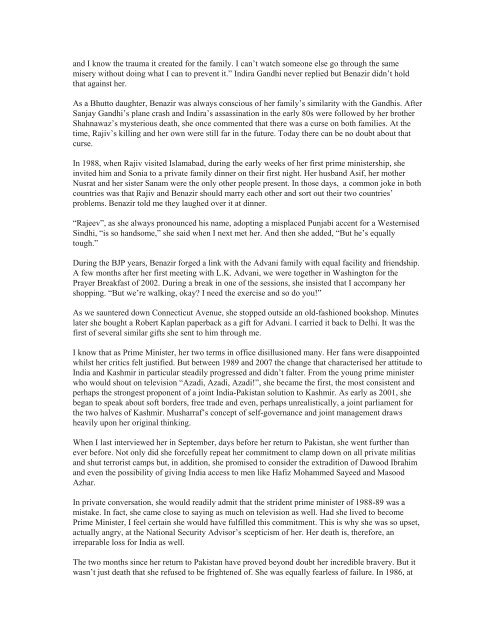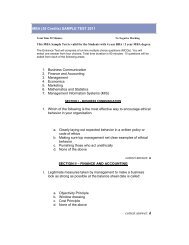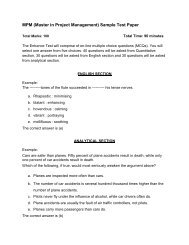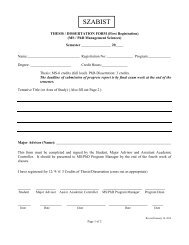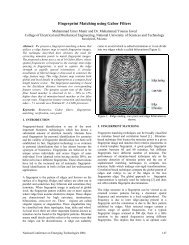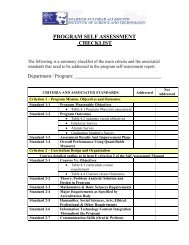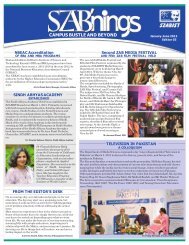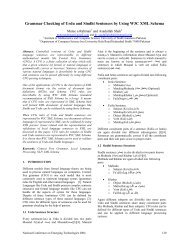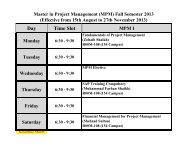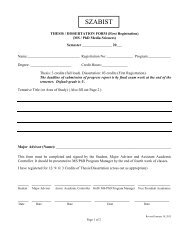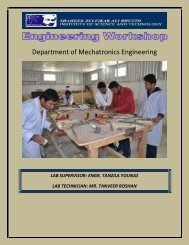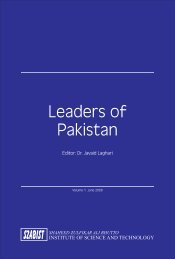Benazir Bhutto - SZABIST
Benazir Bhutto - SZABIST
Benazir Bhutto - SZABIST
Create successful ePaper yourself
Turn your PDF publications into a flip-book with our unique Google optimized e-Paper software.
and I know the trauma it created for the family. I can’t watch someone else go through the same<br />
misery without doing what I can to prevent it.” Indira Gandhi never replied but <strong>Benazir</strong> didn’t hold<br />
that against her.<br />
As a <strong>Bhutto</strong> daughter, <strong>Benazir</strong> was always conscious of her family’s similarity with the Gandhis. After<br />
Sanjay Gandhi’s plane crash and Indira’s assassination in the early 80s were followed by her brother<br />
Shahnawaz’s mysterious death, she once commented that there was a curse on both families. At the<br />
time, Rajiv’s killing and her own were still far in the future. Today there can be no doubt about that<br />
curse.<br />
In 1988, when Rajiv visited Islamabad, during the early weeks of her first prime ministership, she<br />
invited him and Sonia to a private family dinner on their first night. Her husband Asif, her mother<br />
Nusrat and her sister Sanam were the only other people present. In those days, a common joke in both<br />
countries was that Rajiv and <strong>Benazir</strong> should marry each other and sort out their two countries’<br />
problems. <strong>Benazir</strong> told me they laughed over it at dinner.<br />
“Rajeev”, as she always pronounced his name, adopting a misplaced Punjabi accent for a Westernised<br />
Sindhi, “is so handsome,” she said when I next met her. And then she added, “But he’s equally<br />
tough.”<br />
During the BJP years, <strong>Benazir</strong> forged a link with the Advani family with equal facility and friendship.<br />
A few months after her first meeting with L.K. Advani, we were together in Washington for the<br />
Prayer Breakfast of 2002. During a break in one of the sessions, she insisted that I accompany her<br />
shopping. “But we’re walking, okay? I need the exercise and so do you!”<br />
As we sauntered down Connecticut Avenue, she stopped outside an old-fashioned bookshop. Minutes<br />
later she bought a Robert Kaplan paperback as a gift for Advani. I carried it back to Delhi. It was the<br />
first of several similar gifts she sent to him through me.<br />
I know that as Prime Minister, her two terms in office disillusioned many. Her fans were disappointed<br />
whilst her critics felt justified. But between 1989 and 2007 the change that characterised her attitude to<br />
India and Kashmir in particular steadily progressed and didn’t falter. From the young prime minister<br />
who would shout on television “Azadi, Azadi, Azadi!”, she became the first, the most consistent and<br />
perhaps the strongest proponent of a joint India-Pakistan solution to Kashmir. As early as 2001, she<br />
began to speak about soft borders, free trade and even, perhaps unrealistically, a joint parliament for<br />
the two halves of Kashmir. Musharraf’s concept of self-governance and joint management draws<br />
heavily upon her original thinking.<br />
When I last interviewed her in September, days before her return to Pakistan, she went further than<br />
ever before. Not only did she forcefully repeat her commitment to clamp down on all private militias<br />
and shut terrorist camps but, in addition, she promised to consider the extradition of Dawood Ibrahim<br />
and even the possibility of giving India access to men like Hafiz Mohammed Sayeed and Masood<br />
Azhar.<br />
In private conversation, she would readily admit that the strident prime minister of 1988-89 was a<br />
mistake. In fact, she came close to saying as much on television as well. Had she lived to become<br />
Prime Minister, I feel certain she would have fulfilled this commitment. This is why she was so upset,<br />
actually angry, at the National Security Advisor’s scepticism of her. Her death is, therefore, an<br />
irreparable loss for India as well.<br />
The two months since her return to Pakistan have proved beyond doubt her incredible bravery. But it<br />
wasn’t just death that she refused to be frightened of. She was equally fearless of failure. In 1986, at


